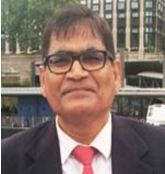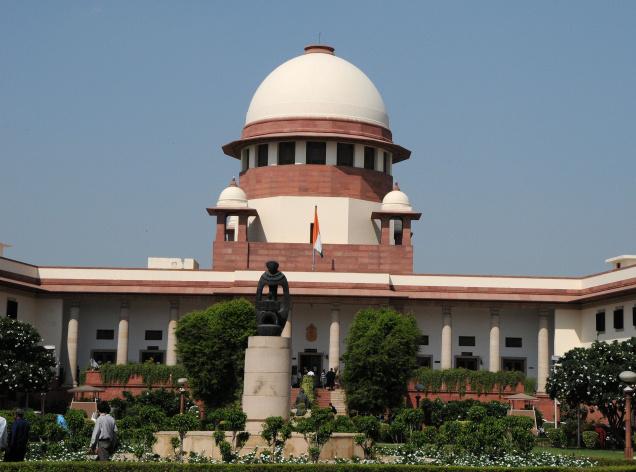 Prof. Satya Narayan Misra in Bhubaneswar, January 17, 2024: Granville Austin, the renowned constitutional expert in his seminal book ‘Working a Democratic Constitution’ considered the Indian Constitution as a seamless web, with three strands that are mutually dependent and intertwined.
Prof. Satya Narayan Misra in Bhubaneswar, January 17, 2024: Granville Austin, the renowned constitutional expert in his seminal book ‘Working a Democratic Constitution’ considered the Indian Constitution as a seamless web, with three strands that are mutually dependent and intertwined.
Those three strands are; protecting national unity & and integrity, establishing institutions and the spirit of democracy, and fostering socio-economic reforms. There was complete unanimity amongst the founding fathers that the fundamental rights in Chapter III would be the conscience of the Constitution.
Influenced by the Bill of Rights of the USA (1791), four concepts viz freedom of speech, the right to life, and liberty and right to property were unequivocally boxed into the original Constitution. Equality before the law, a British Concept, and equal protection of the law, an American concept was part of equality jurisprudence (Article 14) of Part III. Articles 14 (Equality), Article 19 (Right to Freedom), and Art 21 (Protection of Life and Liberty) became the golden triangle of Fundamental rights, as India was coming out of the cusp of asphyxiating colonial repressive legal architecture.
In the words of CJI YV Chandrachud, “Three articles 14, 19, and 21 stand between the heaven of freedom conjured by the Nobel Laureate Tagore and the abyss of unrestrained power’, as in the Rowlatt Act under the British. While Part III inked the architecture of individual political and cultural rights, Part IV of the Constitution delineated the goals of socio-economic justice before the state in the quest of a free country to move towards a more egalitarian society. Modeled after the Irish Constitution of 1937, the principles laid down in this Part were ‘fundamental in the governance of the country’.
But unlike the fundamental rights, which are justiciable in nature, the directive principles were not enforceable by any court. Part IV is an amalgam of socialist principles like promotion of the welfare of people (Article 38), distribution of material resources to serve the common good (39(b), raising the level of nutrition (47), Gandhian principles like organizing village Panchayats, prohibiting cow slaughter, and liberal principles like Uniform Civil Code throughout the country, provision of education from the age 6-14.
While Ambedkar felt that the directives are a novel feature to usher in socio-economic democracy, TT Krishnamachari felt it was a ‘veritable dustbin of sentiments. It was BN Rau whose proposal for distinguishing Part III and PART IV as justiciable and non-justiciable was finally accepted. This dichotomy between how individual rights and the goals of socio-economic justice have witnessed some acrimonious debates in the Supreme Court, which was mandated to be the final interpreter of the Constitution and custodian of fundamental rights.
 The opening salvo was fired when the reservation of seats in government medical and engineering colleges by the Madras government was struck down by the Supreme Court in Champakam Dorairajan case (1951) as violating the equal right of admission in publicly funded institutions under Art 29(2). The promotion of education of weaker sections of society under Article 46, being a non-justiciable directive, the Supreme Court ruled, cannot override a fundamental right.
The opening salvo was fired when the reservation of seats in government medical and engineering colleges by the Madras government was struck down by the Supreme Court in Champakam Dorairajan case (1951) as violating the equal right of admission in publicly funded institutions under Art 29(2). The promotion of education of weaker sections of society under Article 46, being a non-justiciable directive, the Supreme Court ruled, cannot override a fundamental right.
However, when the government added 31C to the Constitution to promote distributive justice Article 39(b), by trumping the right to equality under Article 14 was upheld by the Court in Keshavananda Bharati Case (1973). This was a paradigm shift in the Supreme Court’s perception of socioeconomic justice as fundamental in governance. The Minerva Mills Case (1980) restored a becalming balance between Part III and IV, ‘calling them two wheels of a chariot, which should move harmoniously.
Nevertheless, this idyllic construct of harmony between rights and goals masks a few glaring development deficits. Article 38(2) encourages the state to reduce income inequality and glaring gaps in status and opportunity, Article 47 enjoins upon the state to improve the level of nutrition. The ground reality in India brings out a serious mismatch between Constitutional goals and reality on the ground.
As per the latest NFHS-V report, stunting among children is as high as 35.5%. This is due to persistent malnutrition and unhygienic ambiance. Anemia amongst children & pregnant women has increased from 58.6% & 50.4% in 2015 respectively to 67.1% & 52.2% in 2021. The World Inequality Report (2022) brings out how the top 10% have become richer with a 57% share of total income as against 40% in 1951.
On the other hand, the bottom 50% accounted for only 13.1% of total income as against 20% in 1951. After economic liberalization in 1991, we have an ironical situation where the Constitution swears by socialism but the economic system is propelled by capitalism and free markets, without sharing prosperity with bottom 50% of our citizens.
Besides, early childhood education and care included in Article 45 have a sorry tale to recount as per NEP 2020. The 14 lakh Anganwadi centres which is mandated to provide such informal education to around 300 million children are not equal to the task. NEP 2020 recommended that ECE should be FR-like for school children in the age group of 6-14 (RTE Act 2009).
The unfortunate fallout has been the dissonance between growth variables and human development indicators. Doubling growth rate in GDP, exports, and savings, post-1991 is accompanied by a reduction in Infant Mortality, Maternal mortality & malnutrition, stunting & and anemia at a snail’s pace. Prof T Khaitan in a stirring analysis believes that the directive principles serve as an important device for constitutional consensus building by achieving accommodation of ideological dissenters like the socialists, Gandhians, and cultural nationalists at the time of the drafting of our Constitution.
 While socialists wanted a full-blown Socialist constitution, the Gandhians rooted for autarkic village republics and cultural nationalists a Hindi-speaking Hindu Rashtra. The ideas of cultural ideologues, unlike John Rawls’ idea of justice like the right to livelihood, right to work, unemployment benefits, living wage, and free and compulsory education, have extremely polarizing impacts.
While socialists wanted a full-blown Socialist constitution, the Gandhians rooted for autarkic village republics and cultural nationalists a Hindi-speaking Hindu Rashtra. The ideas of cultural ideologues, unlike John Rawls’ idea of justice like the right to livelihood, right to work, unemployment benefits, living wage, and free and compulsory education, have extremely polarizing impacts.
In contrast, the South African Constitution (1997) rejected directives as inadequate for its transformative agenda. The thrust is to transform the country in an egalitarian direction. The right to housing, food, water, and health care are part of fundamental rights.
Unlike India, economic rights and economic justice move hand in hand with political rights in South Africa. One of India’s progressive judges Justice Krishna Iyer wrote: Social Justice is gibberish when inhuman poverty is widespread and accumulated inequality is wearing the armor of wealth. The Fabian socialism of Nehru and the Gandhian model of autonomous village republics have outlived their utility.
As the Indian republic approaches 74, it is time to use the template of Nelson Mandela’s transformative constitutionalism of economic democracy rather than propitiating the political rights of a few. The capability approach of Prof Sen in terms of equal opportunity to quality education, basic health care, and adequate nutrition for all must be scripted into the Constitution as fundamental rights rather than remaining elusive nonjusticiable goals. . The author teaches Constitutional Law


Leave a Reply
Be the First to Comment!